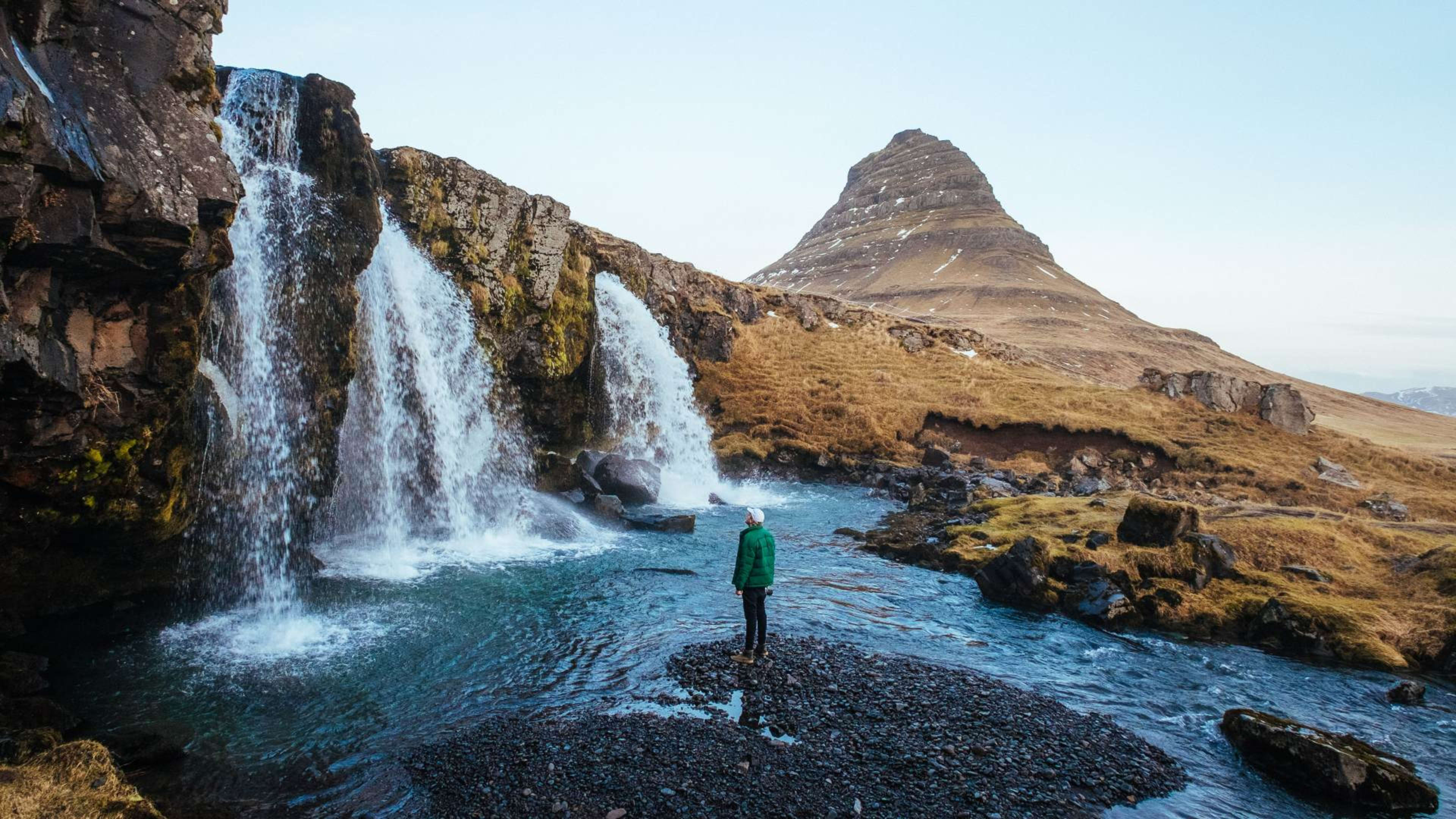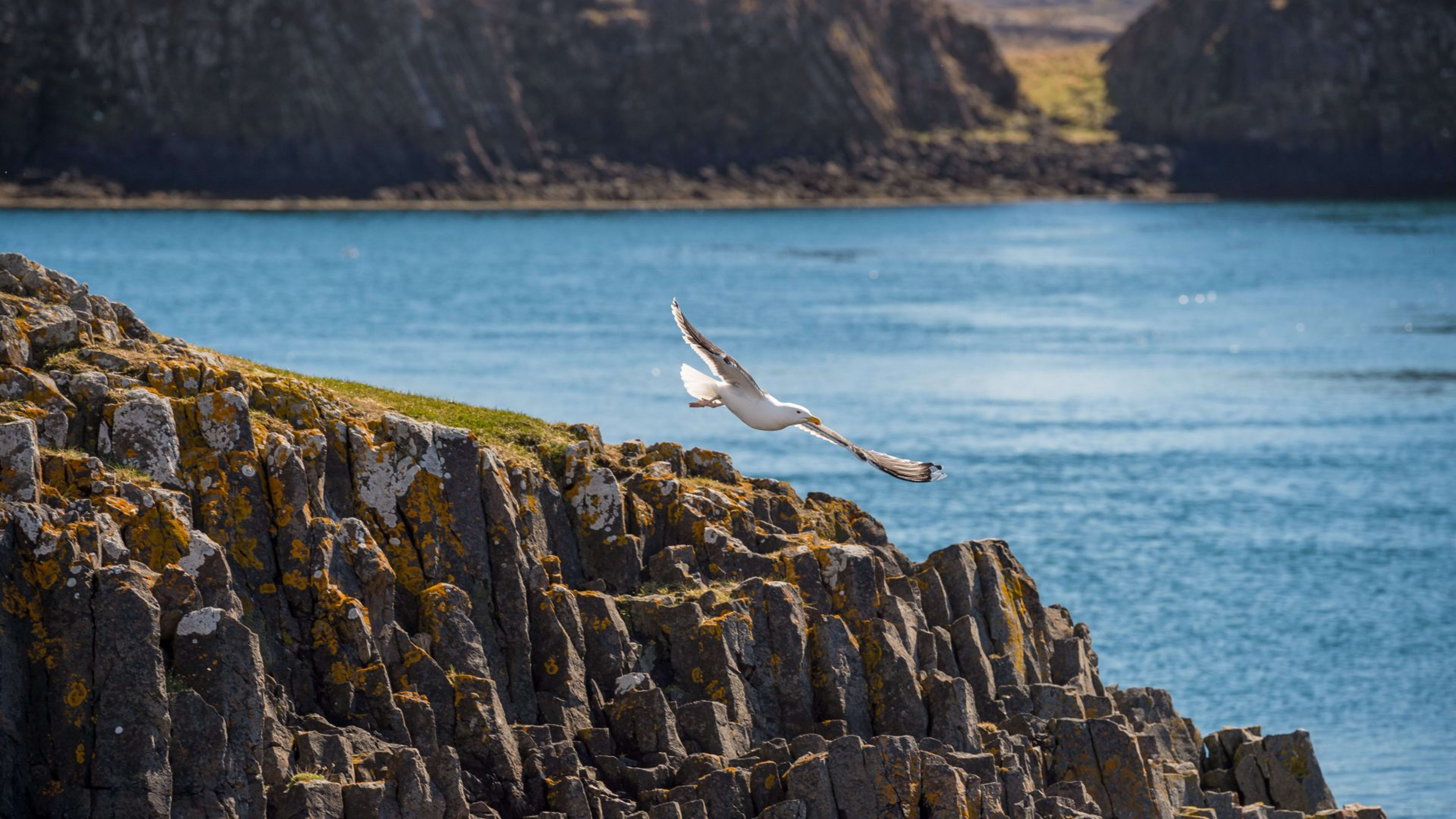Your guide to Djúpalónssandur beach
Venture to the southwestern edge of the Snæfellsnes peninsula and you’ll come to Djúpalónssandur, a black pebble beach. Here you can try your hand at moving the ancient lifting stones. You’ll also come across the remains of a shipwreck as you explore the lava rock formations.
As you leave the parking lot behind and head down onto the beach, you’ll pass a rock tower, Gatklettur, with a hole in the center. Make sure to glance back for a perfectly-framed shot of Snæfellsjökull glacier.
Right next to Gatklettur is Svörtulón, or the black lagoons, a deep pool at the back of the beach. Because it’s fed by a stream, the top layer of the lagoon is freshwater. This means that, rather than being salty, it’s technically drinkable. But we wouldn’t recommend it!
Further down the beach, you’ll come to more outcrops. According to local folklore, some of them were trolls, turned into rock when they were caught out in the daylight. While others, such as Söngklettur (the ‘singing rock’), are said to be the home of Icelandic elves.
Delve into Djúpalónssandur’s history
It might seem hard to believe now, but around the 16th and 17th centuries, Djúpalónssandur was a thriving fishery. Although there’s not much evidence left today, there were once bustling fishing villages nearby.
The 4 lifting stones you’ll see on the beach are a sign of Djúpalónssandur’s fishing history. Weighing up to 154 kg, they were used to test the strength of the fishermen. Only the strongest were allowed to row the fishing boats.
These are the names, meanings, and weights of each stone:
- Amlóði (‘useless’), weighs 23 kg (51 lbs)
- Hálfdrættingur (‘weakling’), weighs 54 kg (119 lbs)
- Hálfsterkur (‘half strength’), weighs 100 kg (220 lbs)
- Fullsterkur (‘full strength’), weighs 154 kg (340 lbs)
If you’re interested in more recent history, you’ll be intrigued by the pieces of rusted iron scattered across the black pebbles. These fragments are part of the British trawler Epine GY7, which was shipwrecked on the beach in March 1948.
Staying safe during your visit
You’ll notice when you arrive at Djúpalónssandur that there’s a warning sign by the parking lot. Please read the sign and do not swim or get too close to the sea when taking photos on the beach.
This is because you could be caught off guard by a rogue wave and carried out to sea in a rip current. Unfortunately, accidents like this have happened here, so stay safe by standing well back from the surf.





